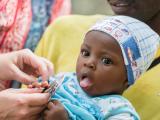A new report from the Government Accountability Office (GAO) has found the federal response to antibiotic resistance is falling short in several areas.
The GAO report, issued earlier this week, examined federal efforts related to surveillance of antibiotic resistant bacteria, the development and use of diagnostic tests to detect antibiotic resistance, the development of new antibiotics, and tracking appropriate antibiotic use. In all four areas, the GAO found that while progress has been made, the response to date from the Centers for Disease Control and Prevention (CDC) and the Department of Health and Human Services (HHS) has been hampered by several challenges.
Among the challenges highlighted in the report are limited data and lack of timely information on the magnitude of and trends in antibiotic resistance, limited research on the value of diagnostic tests for reducing rates of antibiotic-resistant infections, lack of a strategy to incentivize development of new antibiotics, and a limited ability to monitor and improve antibiotic use in healthcare settings.
Based on the findings, the GAO has made a series of recommendations to strengthen the federal response.
Challenges, recommendations
On the issue of surveillance, the report describes several efforts by the CDC to expand surveillance for priority pathogens since the 2015 release of the National Action Plan for Combating Antibiotic-Resistant Bacteria, which emphasized the need to track and monitor the emergence of resistance across the country. Among those efforts are the creation of the Antibiotic Resistance Laboratory Network, a new module within the National Healthcare Safety Network (NHSN) for reporting data on antibiotic-resistant pathogens, and the Gonococcal Isolate Surveillance Program (GISP).
But the GAO found that only 10% of eligible US hospitals are using the new NHSN module, partly because participation is voluntary and partly because of limited resources in many hospitals. That limits the ability of the CDC to conduct national and regional assessments of problematic pathogens in the healthcare system. In addition, the GAO found that GISP data aren't very representative because the program tracks only about 1% to 2% of all US gonorrhea cases, and only in men.
To address these issues, the GAO recommends that the CDC director determine the hospital participation rate needed to conduct national and regional assessments of antibiotic resistance, and ensure that the agency's evaluation of GISP include measures of representativeness.
On diagnostic testing, the GAO found that, while federal agencies have conducted studies to establish whether testing can lead to positive health outcomes, many more are needed. But the agencies in position to conduct or fund such studies—mainly the CDC and the Biomedical Advanced Research and Development Authority (BARDA)—disagree about what each agency should do. The GAO recommends that HHS, which oversees the CDC and BARDA, clarify roles and responsibilities in regards to diagnostic testing.
"By clarifying roles and responsibilities, HHS agencies could more effectively address the need for more studies," the GAO said. "The resulting studies could help demonstrate the value of diagnostic tests for antibiotic resistance, potentially increasing their use and improving patient care."
The report also called on HHS to develop a strategy to further incentivize development of new antibiotics, with a particular focus on the type of "post-market" incentives—such as market entry rewards or transferable market exclusivity vouchers—that many antibiotic development experts believe are needed to overcome the financial challenges of antibiotic development. Those challenges have led many pharmaceutical companies to abandon the antibiotic market.
"Until such incentives are developed, more drug companies may exit the antibiotic development sector, and the pipeline of new treatments may continue to decrease," the GAO said.
Finally, the GAO notes that, while federal agencies have made efforts to promote appropriate use of antibiotics through antibiotic stewardship, only certain types of healthcare facilities are required to have antibiotic stewardship programs. In addition, the CDC is limited in its ability to track and monitor antibiotic use because hospitals aren't required to report antibiotic use.
Under the National Action Plan, efforts to tackle these types of barriers are supposed to be identified by an interagency task force, the Combating Antibiotic-Resistant Bacteria (CARB) Task Force, in an annual report to the President. But the four annual reports that have been issued to date by the CARB Task Force have not included any plans to address these barriers.
The GAO report calls on HHS to direct the task force to include in its annual updates plans for addressing any barriers that prevent full implementation of the National Action Plan.
HHS agrees with most, but not all, recommendations
Kathy Talkington, project director for the Pew Charitable Trusts' antibiotic resistance project, says the GAO recommendations are on the mark, particularly when it comes to antibiotic development. A recent report from Pew on the antibiotic pipeline highlighted the lack of novel antibiotics in development and the need for new federal measures to address the market challenges.
"COVID-19 has provided a stark reminder of the need to be prepared before a public health crisis hits, and this report underscores that the US is not prepared to combat the threat posed by antibiotic resistance," she told CIDRAP News. "In particular, our recent analysis confirms there are not enough antibiotics in development and there is a need for federal financial incentives to catalyze antibiotic development and support commercialization."
HHS, in its review of a draft of the report, said it agreed with most of the recommendations, and outlined several actions it intends to take to address them. But the agency did not agree that post-market incentives need to be a part of any future strategy to boost antibiotic development.
"It is still unclear whether post-market financial incentives should necessarily be part of HHS's forthcoming strategic framework to further incentivize the development of new treatments to combat antibiotic resistance," the agency said.
Despite that, the GAO said the recommendation is still warranted.























